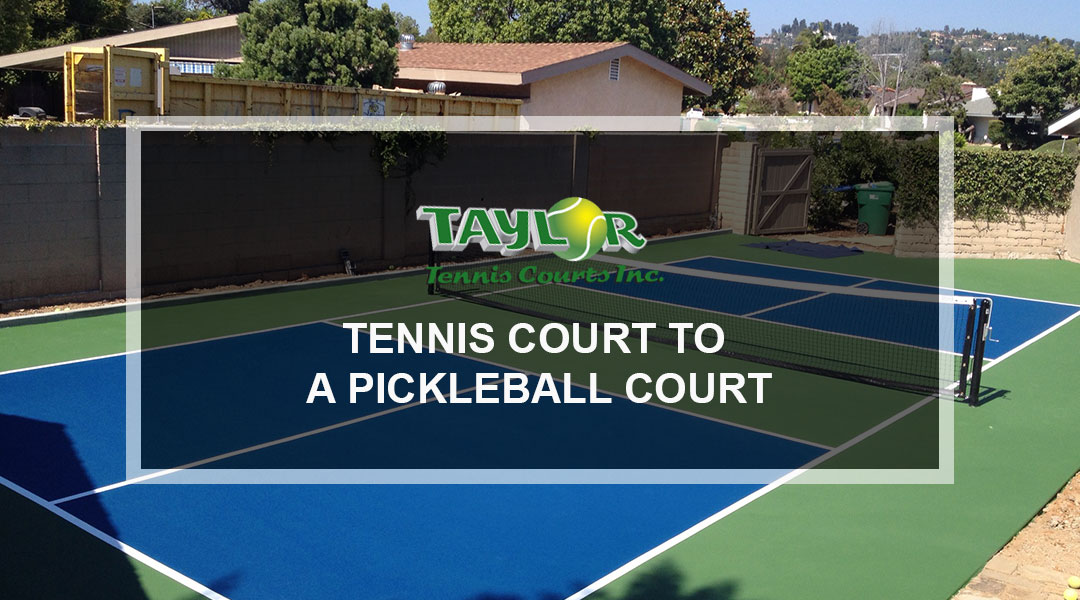Top Notch Pickleball Court Construction for each Degree of Play
Top Notch Pickleball Court Construction for each Degree of Play
Blog Article
Lasting Practices in Pickleball Court Building And Construction You Need To Know
As the appeal of pickleball continues to rise, so as well does the demand for sustainable methods in court building and construction. The impact of these practices prolongs far beyond the court itself.
Picking Eco-Friendly Products
Picking environmentally friendly materials is a critical action in the construction of sustainable pickleball courts. The selection of sustainable materials not only minimizes environmental impact but likewise enhances the longevity and efficiency of the court. Trick products consist of recycled rubber for the surface, which provides outstanding durability and shock absorption while diverting waste from landfills.
In addition, utilizing locally sourced products minimizes transportation emissions and sustains local economic situations. Pickleball court construction. Using indigenous hardwoods for secure fencing and seating can provide a sustainable visual while ensuring durability versus the aspects.
Incorporating absorptive products for court foundations can better contribute to sustainability by permitting all-natural water drainage and lowering runoff. These selections not only secure neighborhood ecological communities however additionally promote much healthier play environments.
Reliable Water Drainage Solutions
While the option of environmentally friendly materials is vital, applying efficient drain options is just as crucial for keeping lasting pickleball courts. Correct drainage not just protects the court surface area from water damages yet likewise reduces disintegration and overflow, advertising ecological stability.
Efficient drain systems can consist of permeable paving, which allows water to penetrate the ground instead of pooling externally. This minimizes the likelihood of standing water, which can cause mold and various other maintenance concerns. In addition, incorporating strategically placed drainage networks and swales can direct excess water far from the court location, making sure a completely dry playing surface area and protecting against dirt disintegration.
Utilizing native vegetation in the landscape design around the courts can additionally enhance drain by soaking up excess water and reducing drainage. These plants need much less irrigation and advertise biodiversity, aligning with lasting practices.
Furthermore, it is essential to regularly keep the drain system to ensure its lasting effectiveness. This consists of clearing debris and monitoring for clogs. By prioritizing effective water drainage services, pickleball court constructors can substantially add to the sustainability and durability of the facility, eventually profiting both gamers and the setting.
Energy-Efficient Lighting Options
As the demand for pickleball remains to expand, incorporating energy-efficient illumination alternatives into court design has become increasingly important for sustainability. Conventional lighting systems typically eat extreme energy, adding to higher operational expenses and environmental impact. As a result, embracing contemporary, energy-efficient technologies is important for both brand-new buildings and improvements.
LED (Light Emitting Diode) lighting attracts attention as a top choice because of its long life and power savings (Pickleball court construction). Contrasted to traditional lights, LEDs utilize approximately 75% much less power and can last as much as 25 times much longer, substantially reducing maintenance prices. In addition, the directional nature of LED lights decreases light pollution, making sure that lighting is concentrated on the court instead than bordering areas.

Lasting Surface Alternatives
Checking out lasting surface area choices for pickleball courts has acquired traction amongst gamers and building contractors alike. The focus on green products not just aligns with the growing environmental awareness but also improves the performance and sturdiness of the courts.
This material supplies superb shock absorption, decreasing the threat of injuries for players while advertising sustainability. These floor tiles are easy to change and install, and their adaptability allows for description different court configurations.
Natural yard courts are also emerging as a sustainable option, promoting biodiversity and minimizing the warm island result. Nonetheless, they require regular maintenance and water, which may not line up with all sustainability objectives.

Water Conservation Strategies

Another reliable technique involves the setup of rainwater harvesting systems. These systems store and accumulate rainwater for use in keeping court surface areas and landscape design. This technique not only preserves potable water however also decreases dependence on metropolitan sources.
Additionally, utilizing drought-resistant landscape design around the courts is essential. Native plants call for less water and are better adjusted to neighborhood climate problems, hence reducing general water intake. Additionally, utilizing effective irrigation systems, such as drip irrigation, guarantees that water is delivered directly to plant roots, site minimizing evaporation and waste.
Conclusion
Integrating sustainable techniques in pickleball court construction substantially adds to environmental conservation and source effectiveness. By focusing on these methods, the building of pickleball courts can straighten with broader environmental goals while advertising long life and capability within communities.
As the popularity of pickleball proceeds to rise, so too does the need for sustainable practices in court building.Picking eco-friendly products is an essential step in the building of sustainable pickleball courts. By focusing on energy-efficient illumination options, pickleball court manufacturers can add to a more lasting future while fulfilling the needs of stakeholders and gamers alike.Including lasting surface area choices not just boosts the efficiency of pickleball courts yet additionally leads the means for carrying out efficient water conservation methods.Including sustainable techniques in pickleball court construction significantly adds to environmental conservation and resource efficiency.
Report this page